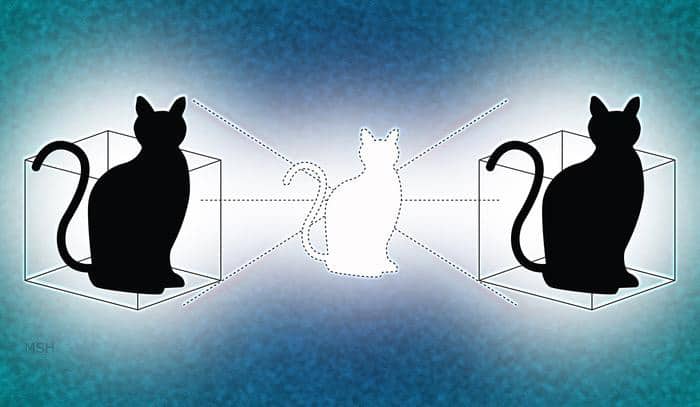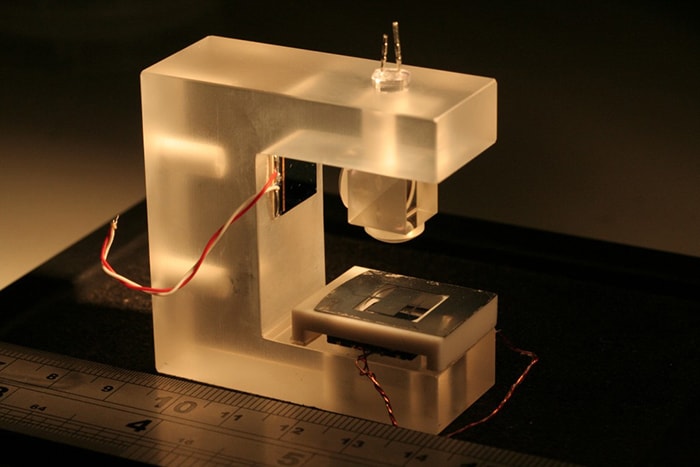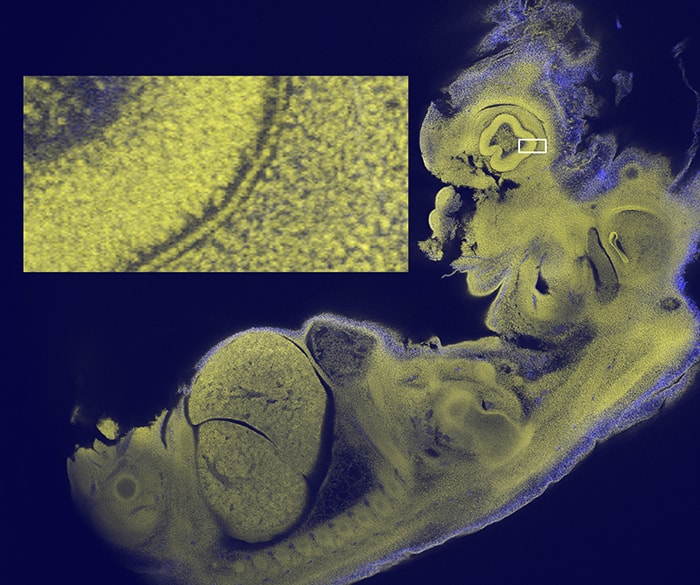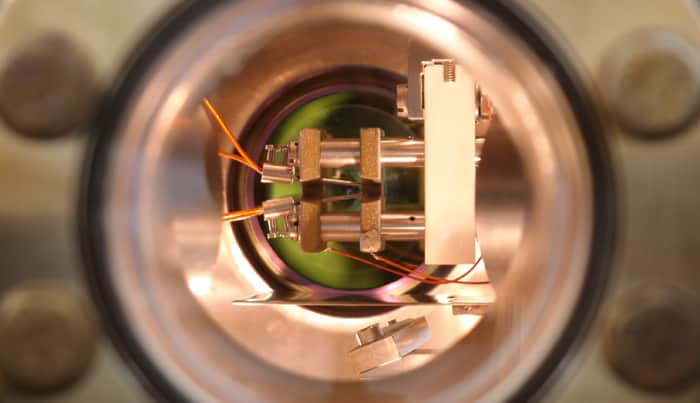The Physics World 2016 Breakthrough of the Year goes to “the LIGO Scientific Collaboration for its revolutionary, first-ever direct observations of gravitational waves”. Nine other achievements are highly commended and cover topics ranging from nuclear physics to material science and more.

Almost exactly 100 years after they were first postulated by Albert Einstein in his general theory of relativity, gravitational waves hit the headlines in 2016 as the US-based LIGO collaboration detected two separate gravitational-wave events using the Advanced Laser Interferometer Gravitational-wave Observatory (aLIGO). The first observation was made on 14 September 2015 and was announced in February this year. A second set of gravitational waves rolled through LIGO’s detectors on 26 December 2015, and this so-called “Boxing Day event” was announced in June this year. Gravitational waves are ripples in the fabric of space–time, and these observations mark the end of a decades-long hunt for these interstellar undulations.
The measurements also herald the start of the era of gravitational-wave astronomy and multi-messenger astronomy, whereby gravitational-wave observations are combined with those made by optical and radio telescopes and other detectors observing the cosmos. Indeed, LIGO’s twin detectors will soon be joined by a global network of gravitational-wave detectors.
Cataclysmic events
The gravitational waves from both events were produced by cataclysmic events in the distant universe – the collision and eventual merger of two black holes. In the first event, two black holes of 36 and 29 solar masses, respectively, merged to form a spinning, 62 solar-mass black hole, some 1.3 billion light-years away in an event dubbed GW150914.
The gravitational waveform was picked up by the then newly upgraded aLIGO detectors – one in Hanford, Washington, and the other in Livingston, Louisiana. In fact, when the signal reached the observatories, both detectors were still being calibrated. Despite this, the signal from GW150914 was so strong and clear that it could be “seen” in the data by eye and was measured to a statistical certainty of 5.1σ.
The waves in the Boxing Day event – dubbed GW151226 – were also generated by colliding black holes. These weighed in at 14 and 8 solar masses, and merged to form a single, spinning 21 solar-mass black hole, some 1.4 billion light-years away. In October 2015 LIGO recorded a third possible event, dubbed LVT151012. Although not statistically significant enough to be a discovery, the team believes this event also arose from two coalescing black holes.
Three in four months
LIGO detected three events in its four months of observation, and this was no mean feat. The instruments are sensitive enough to detect a change in length less than 1000th the size of a single proton between its interferometer’s arms – which is an incredible feat of engineering.
LIGO has already changed our view of the universe – its observations are the first direct evidence for the existence of black holes. Also, the stellar-mass black holes that merged in both events do not fit our current understanding of black holes. Astronomers had thought that such binaries would either not form at all or, if they did, they would be too far apart to merge within the age of the universe. Also, the LIGO collaboration had expected that its first detections would come from binary neutron-star mergers rather than coupling black holes, which were thought to be rare. But the data from the recent discoveries suggest that the rate of binary-black-hole mergers is higher than expected.
- In the below video, LIGO scientists at the University of Cardiff talk about the first-ever detection of gravitational waves. Looking to the future, they speak about the prospect of a new era of gravitational-wave astronomy.
The top 10 breakthroughs were chosen by a panel of four Physics World editors and reporters, and the criteria for judging included:
- fundamental importance of research;
- significant advance in knowledge;
- strong connection between theory and experiment; and
- general interest to all physicists.
Now for our nine runner-up breakthroughs, which are listed below in no particular order.
Schrödinger’s cat lives and dies in two boxes at once

To Chen Wang, Robert Schoelkopf and colleagues at Yale University in the US and INRIA Paris-Rocquencourt in France for creating a Schrödinger’s cat that lives and dies in two boxes at once. In this new twist on a much-loved quantum paradox, the boxes that hold Schrödinger’s cat are two entangled microwave cavities. The cats are represented by large ensembles of photons, which exist in each cavity. These ensembles can be in one of two quantum states – alive or dead – and the team managed to put the entire system into a state in which both cats (in both boxes) are both alive and dead until a measurement is made. Besides providing a novel illustration of how Schrödinger’s cat can be in two places at once, the large numbers of photons in such “cat states” could provide a robust way of storing quantum information using error-correction protocols.
Elusive nuclear-clock transition spotted in thorium-229
To Lars von der Wense, Peter Thirolf and colleagues at Ludwig Maximilian University of Munich, GSI Helmholtz Centre for Heavy Ion Research, Helmholtz Institute Mainz and the Johannes Gutenberg University Mainz for detecting the elusive thorium-229 nuclear-clock transition. It has long been a goal of some in the metrology community to produce a “nuclear clock” by locking a laser to a rare low-energy nuclear transition. Such a clock would, in principle, be much more stable than a conventional atomic clock because the nucleus is much less susceptible to interference from stray electromagnetic fields. The predicted 7.8 eV transition in thorium-229 is seen as an ideal candidate – except that physicists had been unable to actually detect it. By doing experiments involving atoms and ions of thorium-229, the team showed that the transition does indeed exist and has energy in the 6.3–18.3 eV range. The next step for the researchers is to improve their measurements so that the energy is known to millielectronvolt precision. This would then allow the transition to be studied using laser spectroscopy.
New gravimeter-on-a-chip is tiny yet extremely sensitive

To Giles Hammond and colleagues at the University of Glasgow for building a highly sensitive gravimeter that is both inexpensive and compact. Their tiny device can make very precise measurements of Earth’s gravity and could be deployed in drone aircraft or in multi-sensor arrays to perform a range of tasks, including mineral exploration, civil engineering and monitoring volcanoes. While the gravimeter is not quite as sensitive as the best available sensors, it could be produced for a 1000th of the cost and is also significantly smaller and lighter than current devices. The device is based on a “proof mass”, which is a piece of silicon about 10 mm long that sits on top of two flexible struts. The mass, struts and frame are all made using standard semiconductor-manufacturing processes.
Negative refraction of electrons spotted in graphene
To Cory Dean, Avik Ghosh and colleagues at Columbia University, the University of Virginia, Cornell University, the Japanese National Institute for Materials Science, Shenyang National Laboratory for Materials Science and IBM for measuring the negative refraction of electrons in graphene. Negative refraction is a property of some artificial metamaterials and can be used to create novel optical devices such as a perfect lens. Electrons in materials can behave as waves and negative refraction should also occur at the interface between an n-type and a p-type semiconductor (a p–n junction). It has proven impossible to see this effect in conventional semiconductors because most electrons are reflected at p–n junctions. Dean and colleagues created a p–n junction in graphene and ensured that the interface was very smooth to minimize reflections – allowing them to measure the negative refraction of electrons. Negative refraction could be used to bring a diverging electron beam to a sharp focus and this could form the basis of an electronic switch that consumes very small amounts of energy.
Rocky planet found in habitable zone around Sun’s nearest neighbour

To the Pale Red Dot collaboration for finding clear evidence that a rocky exoplanet orbits within the habitable zone of Proxima Centauri, which is the nearest star to the solar system. Dubbed Proxima b, the exoplanet has a mass about 1.3 times that of the Earth and is therefore most likely a terrestrial planet with a rocky surface. Our newly found neighbour also lies within its star’s habitable zone, meaning that it could, in theory, sustain liquid water on its surface, and may even have an atmosphere. Proxima Centauri is a red-dwarf star that is just 4.2 light-years away from the Sun. While Proxima b could be subject to ultraviolet and X-radiation that is far more intense than that experienced on Earth, the team says that this does not exclude the existence of an atmosphere. Whether the planet contains liquid water, and ultimately life, depends upon exactly how it formed – according to the team.
Physicists take entanglement beyond identical ions
To Chris Ballance and colleagues at the University of Oxford and Ting Rei Tan and colleagues at NIST in Boulder, Colorado, for creating and measuring quantum entanglement between pairs of two different kinds of ions. The work – which was done independently by the two groups – is an important step towards the creation of ion-based quantum computers based on two or more different kinds of ion. Such hybrid systems would take advantage of the fact that some ions are better than others at performing specific quantum-computing tasks. The Oxford team entangled ions of two different isotopes of the same element – calcium-40 and calcium-43 – whereas the NIST group used beryllium-9 and magnesium-25 as their ions.
‘Radical’ new microscope lens combines high resolution with large field of view

To Gail McConnell, Brad Amos and colleagues at the University of Strathclyde for creating a new microscope lens that offers the unique combination of a large field of view with high resolution. Called a mesolens, the device allows a confocal microscope to create 3D images of much larger biological samples than was previously possible – while providing detail at the sub-cellular level. The ability to view whole specimens in a single image could assist in the study of many biological processes and ensure that important details are not overlooked. The researchers used the lens in a customized confocal microscope to image 12.5 day-old mouse embryos. They were able to image single cells, heart-muscle fibres and sub-cellular details, not just near the surface of the sample but throughout the depth of the embryo.
Quantum computer simulates fundamental particle interactions for the first time
To Rainer Blatt and Peter Zoller of the Institute for Quantum Optics and Quantum Information Innsbruck and the University of Innsbruck, and colleagues, for simulating fundamental-particle interactions using a quantum computer. The team used four trapped ions to model the physics that describes the creation and annihilation of electron–positron pairs. While the result can be easily calculated using a conventional computer, problems that are beyond the reach of even the most powerful supercomputers could be solved by the quantum computer if it could be scaled up to include about 30 ions. The team has already built a system with that many ions, but its performance must be improved significantly before it can do practical simulations – something that could be possible within a decade.
The single-atom engine that could

To Kilian Singer, Johannes Roßnagel and colleagues at the University of Mainz for creating an engine based on just one atom. The team’s heat engine converts a difference in temperature to mechanical work by confining a single calcium atom in a funnel-shaped trap. The researchers then heated the atom using electrical noise, and as its temperature increased, its oscillations in the radial direction became larger, causing it to sample regions of higher potential, sending the particle towards the larger end of the trap. By turning the noise on and off periodically, the researchers caused the atom to oscillate between the two ends of the trap. This motion is damped to prevent the atom from escaping the trap – and the energy required to keep the atom in the trap is the work done by the engine. Their next research goal is to cool the atom further and confine it more tightly, so that it no longer behaves as a classical particle but rather as a quantum wavepacket. This could open the door to studies of the interface between thermodynamics and quantum mechanics.



